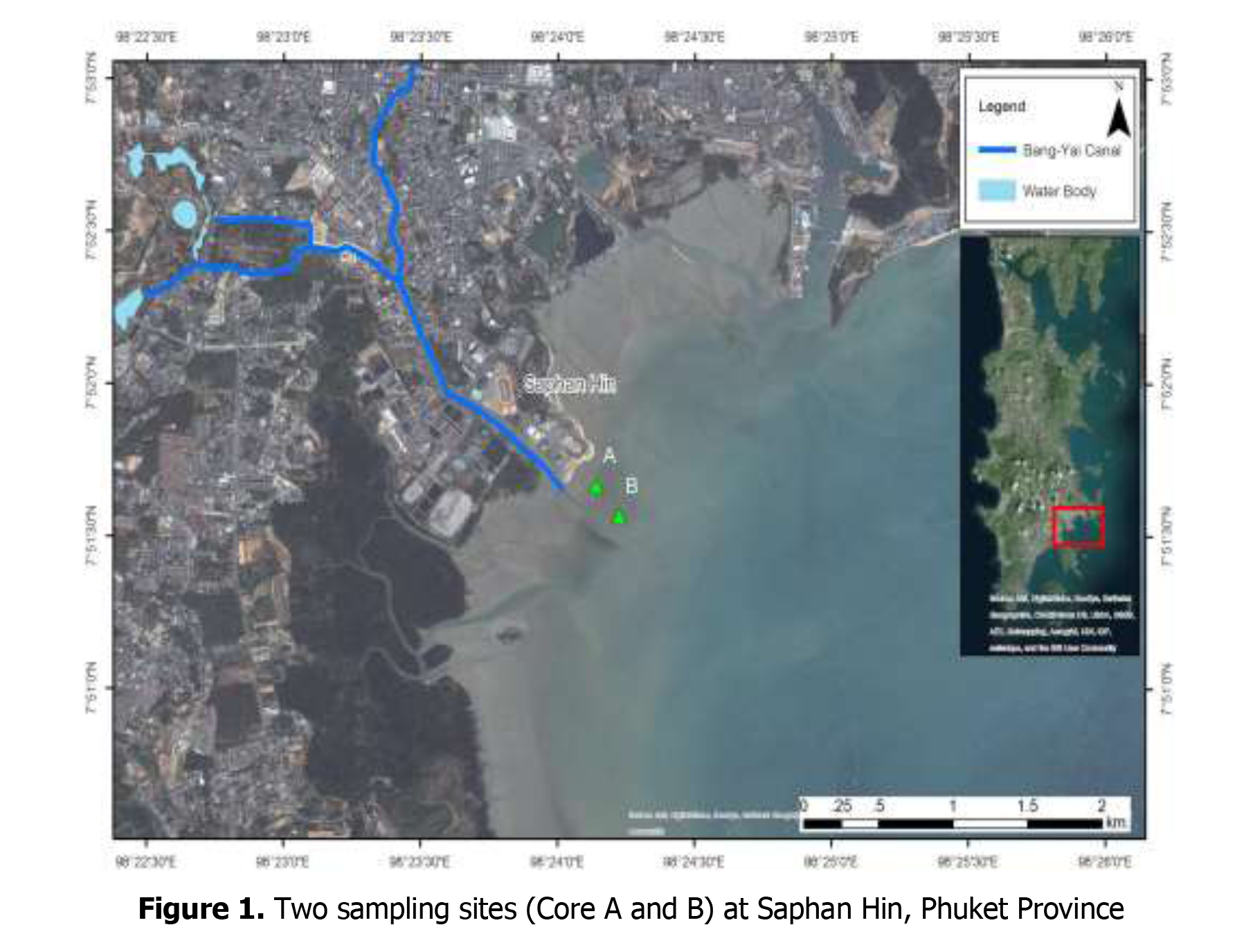The study of historical contamination of Tin (Sn) and Zinc (Zn) in sediments at the Bang-Yai River estuary, Phuket Province
Keywords:
heavy metal, Phuket, sediment, tin miningAbstract
Metal distribution and transportation in sediment is considered to be significant that can cause the adverse effects to human health and environment. Tin (Sn) and other metal contamination in the sediments at Bang-Yai River estuary, Phuket province, is a significant concern affected by the abandoned Tin mining in the past. Percolation from the tailing ponds and the ground water discharges could result in contaminated ground water of the ponds to a nearby stream and receiving water. Therefore, the objective of this study is to determine the pollution levels of Tin and Zinc in sediment cores using a 60-cm long of Russian corer. The subsamples of sediment was separated and cut into an interval using a stainless steel blade, digested using aqua regia digestion according to the Standard US EPA Method 3052 (1996), and analyzed by ICP-OES. The results showed that Tin concentrations in all sediment samples are below detection limit (< 0.03 mg kg-1). Zinc concentration in Core A and B was ranged from 32.83-68.49 mg kg-1and 21.63-73.59 mg kg-1, respectively. The geoaccumulation index (Igeo) and the enrichment factor (EF) values of Sn in the sediments cannot be found due to the very low Tin concentration, except Igeo (IgeoZn < 0) and EF values of Zn (3.17-3.97 and 3.67-3.84 of Core A and B, respectively). This revealed that the study area was unpolluted and not enriched by Tin and Zinc. However, the high EF values of Zn in the superficial sediment as compared to the lower sediment layer was explained the cause of contamination from the human activities. Therefore, the determination of other metals should be considered further.


